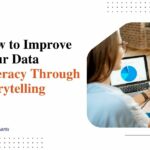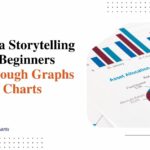How to Present Research Findings with a Good Executive Summary Slide: Tips and Examples
An executive summary slide is a critical component of any research presentation. It distills key findings, insights, and recommendations into a single slide designed to capture attention and convey the most important takeaways. Constructing an impactful executive summary slide takes strategy and practice.
This article will explore what defines an executive summary slide, why it’s important for communicating research, tips for crafting an effective slide, good examples, best practices for presentation, and common mistakes to avoid.
What is an Executive Summary Slide?
An executive summary slide quickly communicates the main points of a research presentation to an audience. It’s akin to an abstract at the beginning of a research paper, summarising vital information before diving into details.
Keeping the slide high-level allows presenters to efficiently set the stage for research findings before elaborating on specifics in subsequent slides. Audiences get an overview to frame the detailed content. Like an executive summary business document, the slide is a preview for executives with limited time to consume large reports.
Why is a Good Executive Summary Slide Important for Presenting Research Findings?

A good executive summary slide is crucial because it:
- Frames the Research: It tells audiences what question the research aimed to address upfront so findings have context immediately.
- Piques Interest: By showcasing one or two intriguing findings on the initial slide, you can hook audiences and make them want to learn more as the presentation unfolds.
- Highlights Importance: Key takeaways cheer the value of research and entice executives to keep listening and consider applying recommendations.
- Provides “Elevator Pitch”: If an audience member needs to leave prematurely or can only stay for the first slide, they still get the core information.
In essence, the executive summary sets the stage for audiences to digest research findings better and rally engagement. It’s a first impression that succinct yet interestingly captures attention. The slide lays the groundwork so audiences become invested in the details of the full presentation.
Tips for Crafting an Effective Executive Summary Slide
Mentioned below are the significant tips for crafting an effective executive summary slide:
Keep it Concise
Executive slides succeed through brevity and clarity. Use succinct phrases over lengthy sentences across all elements. Employ powerful verbs to keep each bullet dynamic yet brief.
Use Bullet Points
Bulleted lists boost brevity while allowing key sections to stand out clearly. Paragraphs fail here. Manage details through tight phrasing vs. wrapping text.
Leverage Visuals
While executive slides spotlight text, incorporate one visual if it quickly conveys key data with instant impact. Use visuals strategically, whether graphs, charts, or images, not just as decoration.
Limit Text
To enable readable text, executive slides should avoid cramming in too many words. Be selective and purposeful. Reduce prepositions, articles or unnecessary words so essential info pops.
Maintain Consistent Design
Keep the font, colours, and layout consistent with the slide deck design for uniform flow. Breaking dramatically from the deck design causes disjointedness between the executive slide and the remaining content.
Highlight Actionable Insights
Emphasise insights that prompt strategic decisions or changes. This attracts executives who want research they can act upon to drive the business forward constructively.
Engage With Data
Incorporate specific statistics, percentages or numbers. Data quantifies key takeaways to underscore credibility and importance. However, be highly selective with the data used; only showcase interesting superlatives on an executive slide.
Examples of Good Executive Summary Slides
The executive summary slide example are as follows:
Example 1
Research Question: How can a software company improve its net promoter score (NPS)?
Methodology: Quantitative – Surveyed 5,000 customers
Key Finding: Customers using live chat support show a 20% higher NPS than those using other channels.
Main Takeaway: Expand live chat support to increase NPS.
This executive slide quickly sets the context on the research goal and methodology, an intriguing key finding based on hard data, and a clear takeaway tied directly to the key finding.
Example 2
Research Question: How can an FMCG brand grow market share?
Methodology: Mixed methods – Surveyed 500 customers, 4 focus groups
Key Findings:
– Premium pricing deters trial for 85% of consumers
– Focus group users prefer lower price points under $15
Main Takeaway: Introduce an economy offering under $15 to attract new buyers.
Here, the slide features a research question, notes mixed methods, and highlights two key findings. It provides qualitative and quantitative data revealing why the brand struggles with trial. It culminates in an actionable recommendation tailored to the findings.
Example 3
Research Objective: Identify new product opportunities
Methodology: Quantitative – 1,000 customer surveys
Key Finding: 47% are interested in self-fitting shoes with both soft & stiff cushioning zones.
Main Takeaway: Develop adjustable shoes with dual-density midsoles for personalised fits and cushioning levels.
In this case, the slide presents the research goal, quantitative methodology, an exciting key finding showing high consumer interest, and an on-target new product concept stemming directly from customers’ requests.
Best Practices for Presenting the Executive Summary Slide
Consider these presentation best practices:
Start With a Strong Hook
Opening a presentation with intriguing research insight, surprising findings, or compelling questions featured on the executive slide immediately grabs attention. Don’t just dryly read bullet points; creatively capture interest upfront.
Pace Your Delivery
When unveiling the executive slide, speak slowly and deliberately to ensure audiences absorb information. Do not cram or rush through the content.
Use Data to Support Your Claims
Spotlight key statistics, percentages or figures from research referenced in slide bullets to substantiate claims with credible data. Quantifying findings boost executive engagement.
Invite Questions Early
After covering the executive slide, invite the audience to ask clarifying questions before proceeding. Answering upfront questions preemptively avoids confusion.
Common Mistakes to Avoid
While executive slides should be concise, resist these common missteps:
- Providing Too Little Context: Failing to feature research objectives, methodology or participant details leaves audiences without proper context to interpret findings appropriately. Err toward inclusion over exclusion.
- Neglecting Key Findings: Prioritising secondary takeaways over the most intriguing primary findings on executive slides causes presentations to meander before striking gold. Lead with the best nuggets first.
- Making Vague Recommendations: Main takeaways centered on vague suggestions like “refine positioning” fail to provide executives clear direction. Tailor recommendations directly to present findings.
- Using Complex Jargon: Though targeting leadership, resist using technical lingo only researchers understand. Define terms or simplify language for universal comprehension.
- Inundating Visuals with Text: Jamming extensive text onto charts or graphs defeats their purpose. Streamline verbiage so visualisations enhance communication.
- Rushing Delivery: Speaking too quickly or cramming executive slide content sabotages audience digestion. Take time to communicate each section clearly.
- Forgetting to Fill Context Gaps: Neglecting to define key terms or acknowledging limitations leaves executives filling holes. Proactively address essential questions.
Conclusion
An exceptional executive summary slide distills research methodology, objectives, salient findings and actionable takeaways into a single, captivating slide. Though brief, it frames presentations, engages audiences, quantifies value, and primes further details. Perfecting executive summary slides is imperative for communicating research insights and maximising impact across executive audiences with limited time.







